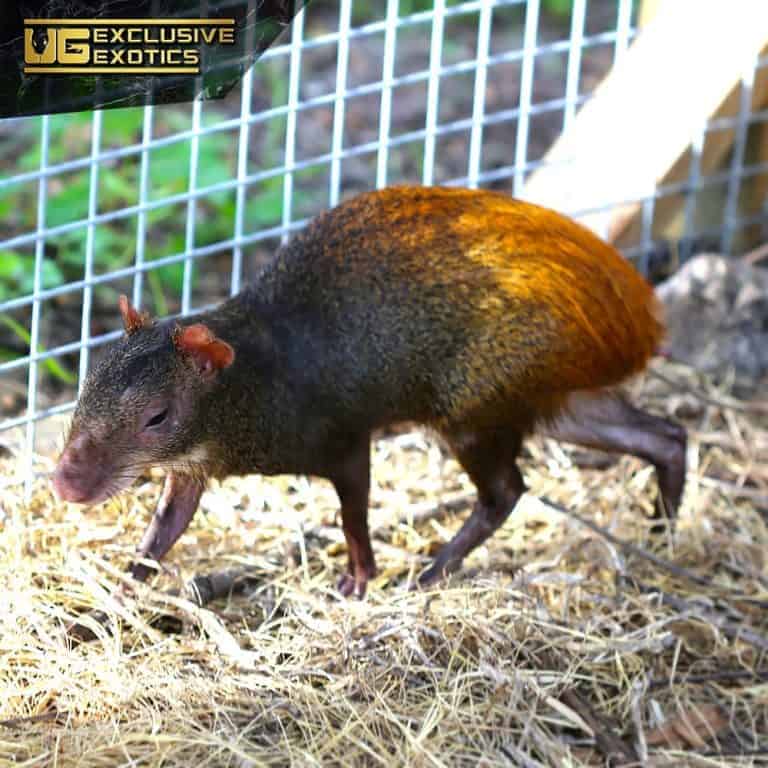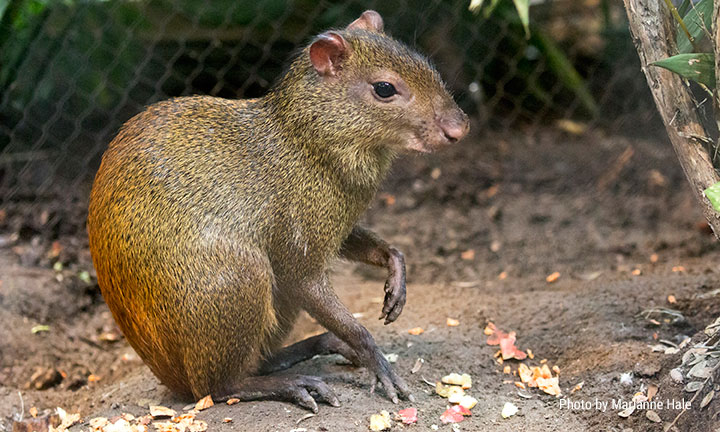
Behavior of the Agoutiīehavior varies from species to species. Veterinarians oversee their diets, which usually contain a variety of fruits, vegetables, nuts, and more. They provide the rodents with densely vegetated habitats, with a variety of plants, hiding places, and even burrows. Their care varies slightly from species to species. Zoos house some species of these rodents in their collections. However, it is illegal in many places to own an Agouti as a pet. Some people do keep these creatures as pets. Humans have not domesticated these rodents in any way. The IUCN lists some species as Least Concern, and others as Endangered. The impact of these activities varies from one species to the next. People clear this creature’s rainforest habitat for logging, agriculture, mining, and urban spread. However, one of the most detrimental human activities is habitat destruction. Some humans keep Agoutis as pets, some hunt them, and some kill them for damaging crops. Some even follow troops of monkeys to eat the discarded fruits that the primates drop while feeding. While foraging, they move from tree to tree searching for fallen fruit. They also feed on vegetables, crops, succulents, roots, seeds, and more. Most of their diet consists of nuts, berries, and fruits. These rodents are herbivores, which means that they eat plants. You can find Agoutis as far north as Mexico, and as far south as South America. Some live over a wider expanse, while others occupy just a small region of land. Distribution of the AgoutiĮach species has its own unique range and distribution. On plantations, farmers find them a nuisance because they damage banana plants and sugarcane. You can also find these rodents in farms and pastures. Some other habitats that they occupy include grasslands, savannas, and brushy areas. They prefer rainforest regions with dense vegetation and plenty of nuts and fruits to eat. The different species usually live in similar habitat types. They dig small caches in the ground, and bury surplus food for later use.

Mammal Species of the World: A Taxonomic and Geographic Reference (3rd ed.).

They are known to feed on and disperse Astrocaryum aculeatissimum seeds, as well as Hymenaea courbaril seeds. They also feed on insect larvae when plant resources are low. It lives 15-20 yrs in captivity.įood mostly consists of seeds, pulp, leaves, roots and fruits. They need large areas for food, breeding, and territory because of this, keeping them in captivity is difficult.

They live in pairs or family groups of the parents and babies. On average, it takes 20 weeks for the young to be weaned. They have no distinct breeding season, but females come into season twice a year and generally have one to four young. They can be distinguished from other agoutis by their distinct coloring. The front feet have four toes and the back have three each. The fur becomes more orange as it goes past (going down) the middle area of the animal. They are brownish with darker spots on the upper body. The females are larger than males but otherwise look similar. They are about 19 to 25 inches (48 to 64 cm) long. Red-rumped agoutis weigh about 3 to 6 kilograms (6.6 to 13.2 lb). Captive specimen at Henry Vilas Zoo in the United States


 0 kommentar(er)
0 kommentar(er)
